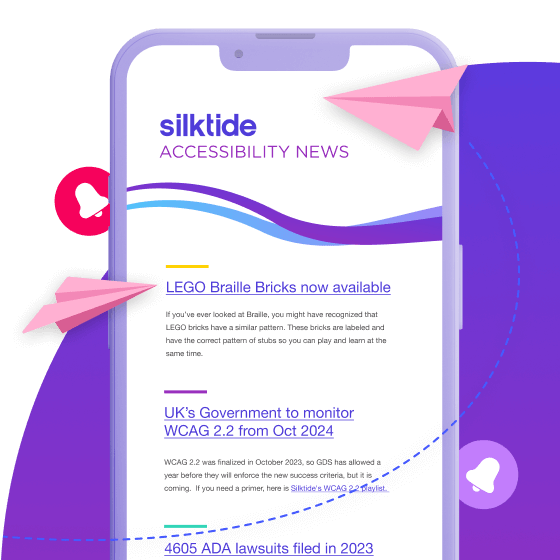Here are some of the things that we do to make remote working the best way of working.
Back in 2020 employees around the world had no choice but to pack up their desks and set up an office at home. Today, remote working is the new norm. For a lot of organizations anyway.
Consider that people have different preferences. We understand that some people thrive in an office environment and others in their comfy home office. So, why not give employees the choice?
There are a lot of strong opinions about the benefits of remote work online, including claims that “a switch to permanent remote work would make us all less productive”, from the Washington Post.
I get it, and in some circumstances, I think that remote working could kill productivity. But I think that it comes down to how a business handles remote working. Without specific measures in place to help and truly support remote working, then it’s unsurprising.
Here at Silktide, we think that we’re doing remote work better. So, here are some of our solutions to the common challenges with working remotely and how we keep up productivity.
Relationships
In a traditional office environment it’s easy to build relationships with colleagues during a chat over the desk, a catch-up by the water cooler, or just over lunch.
If you and your colleagues are working from home then it’s much harder to build these relationships. Yet they are super important when it comes to having a team that works together efficiently. At Silktide, we do a bunch of things to tackle this.
One thing that every employee does is write their own personal README. Just like a README document that may come with a software download that tells you how to get started, a personal README is a short guide on how to get started with that person. It contains information about their job, experience, and what they can help with but also their hobbies, interests, and future goals.
It’s a great way to get to know people new and old so that you can easily build those relationships as you would if you were sat across the same desk.
Now we can’t take all of the credit. Employees at Slack, Google, Netflix, and GOV UK also use personal READMEs – and for good reason. I’ve found them invaluable when it comes to working with a remote team effectively.
While we all work “remote”, we still have offices in the US and UK. They’re perfect for regular meet-ups, meeting new employees, and, importantly, giving people the choice of where they’d prefer to work. You can’t assume everyone likes to work the same way.
Capturing the office vibe
Transitioning from a busy office environment to a new remote working role can be difficult for some people. I hate noise, so working in my almost silent office is a luxury for me. But others might miss that background chatter or the casual over-the-desk chats you’d get in an office.
At Silktide, many of our team members may host a background Zoom call for anyone to join to get a taste of that background office chat. They’re never scheduled in and there’s never any pressure to join. But for those who miss the office “buzz”, it’s a perfect substitute.
Getting set up
One challenge with remote working is that you never know the conditions of someone’s home working environment. Some people may be working from the kitchen countertop whereas others may have their own dedicated office space. You can’t always assume that everyone has the same kind of working environment.
That’s why Silktide provides all of its employees with an office budget that they can spend on a good desk, office chair, monitors, and anything else that they need in order to work comfortably.
And that’s not all, all new starters get their choice of laptop equipment since we know that people like to work in different ways. Ensuring that every employee has what they need to work effectively in their own remote environment is obvious to us.
Healthy working
If the pandemic taught us anything it was that we all should pay greater attention to our health, both physical and mental. When working remotely it can be easy to fall into unhealthy bad habits.
It’s worth considering how you can help provide additional ways for your remote workforce to remain healthy. A healthy body means a healthy mind after all.
For many of us, the transition to remote working during the pandemic wasn’t good for the waistline. Silktide supports and encourages healthy habits by funding gym membership. So you can ensure that while working remotely you can still maintain physical health.
But it’s not just about physical health. All of us have mental health of varying degrees and it’s important, particularly in a remote working environment, that employees feel supported.
That’s why Silktide has a dedicated and qualified Mental Health First-Aider who is available to have a confidential conversation in whichever format works for you. It’s supportive and needed. I don’t think there’s any reason why every organization shouldn’t have several qualified mental health first-aiders in the workplace.
Silktide also has a different take on the outdated notion of Human Resources. Instead, Silktide has a Happiness Manager who is responsible for the traditional HR responsibilities but also has the more important role of ensuring that everyone in the organization is, well, happy. From confidential chats to regular check-ins and gifts on birthdays, our Happiness Manager plays a huge role in our remote working practices.
Slack journals
As a SaaS business, the fact that we use Slack for internal communications comes as no surprise. But we use it in some interesting ways.
Everyone at Silktide has something called a Slack Journal – even our CEO. It’s a channel that everyone in the company can view. Think of it as a diary to jot down thoughts, pain points, things you’re working on, or even out-of-work plans.
The result is something that we think is special and helps us achieve a bunch of things. In a nutshell, journals help us:
- Let everyone know what’s going on without the need for time-wasting, tedious meetings
- Improve collaboration and knowledge-sharing between teams
- Reduce the risk of stress or overwork
- Improve relationship building, as often a journal is a reflection of a person’s personality
Flexibility
In a remote environment, you may find yourself spending more time cooped up in your makeshift office than you do on the sofa in front of the TV. And so here at Silktide, it’s important that all of our staff have the flexibility to work around their life.
We don’t have set lunch times, start or end times. Instead, all we ask of our teams is that they try their best to be around during the core work hours of 10 am-4 pm when possible. The rest of their working time is down to them.
Of course, it requires a huge amount of trust and things like Slack journals help with this. Giving employees the flexibility to take a pet to the vets, pick up the kids from school or even visit a loved one help to make employees feel valued. And at Silktide, we’re big believers that our people are our most important assets.
The takeaway
While we have organizations such as Twitter and Slack that continue to support a fully remote working culture, there are others who don’t. Leaked emails from Elon Musk showed his requests for all Tesla employees to stop remote work and return to the office (understandable given the nature of what Tesla does).
Then there are the brands in-between. Google and Apple are experimenting with a more hybrid approach, providing employees with, albeit limited, flexibility in where they want to work.
So is remote work good, or bad? I think it all comes down to how you manage remote working. We respect people who think differently from us about remote working. You may think that our solutions to the challenges that come with remote working are right, wrong, or maybe even inspiring. Either way, you should be thinking about how remote working operates at your organization.
And yet importantly, our employees have the choice. We still have an office. And giving employees the choice to work the way they work best seems like a no-brainer.
There are a bunch of ways in which Silktide gets remote working right and I hope some of these can inspire other organizations to improve their ways of remote working. And if you’re looking to join a company where you can feel valued, check out our careers page to see what opportunities we’ve got available.

